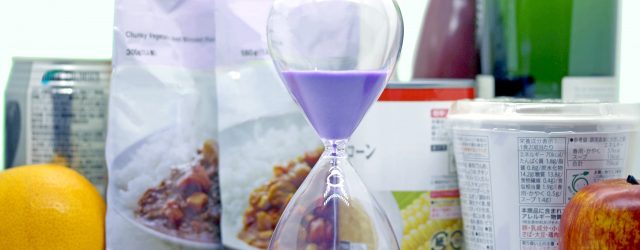
In March 2025, the Consumer Affairs Agency (CAA) amended the Guidelines for setting date labelling on foods (Japanese).
This update stems from the Policy package toward achieving food loss reduction targets (December 2023) (Japanese), which called for a review of the previous guidelines (February 2005) (Japanese) to examine current practices for determining date labelling and applying safety factors*, with the aim of reducing food loss.
*A safety factor is a numerical coefficient, typically less than 1, applied to the scientifically determined shelf life or quality retention period of a food product to set a more conservative date label.
(1) Setting of “Use-by” or “Best-before” dates
The fact-finding survey revealed cases where the distinction between “use-by” and “best-before” dates was made solely based on a five-day rule*, without considering their definitions (Japanese).
According to the definitions (stated below) “use-by” or “best-before” labelling should be applied based on the product’s characteristics.
- A “use-by” date should be set primarily based on the results of safety-related tests and inspections, such as microbiological testing
- A “best-before“ date should be set primarily based on the results of quality-related tests and inspections, such as physicochemical analyses and sensory evaluations
* When date labeling was introduced in 1995, it was notified that expiration dates should be distinguished between “used-by” dates and “best-before” dates, depending on whether the expiration date is within 5 days or beyond 5 days from the date of manufacture. However, this distinction of “5 days” was removed in 2008.
(2) Establishing objective items (indicators) and criteria according to food characteristics
According to the guidelines, those responsible for labelling should have the deepest understanding of their food products’ safety and quality. They must also independently establish objective items (indicators) and criteria for setting date labels, using scientific and rational methods that consider each food item’s specific characteristics and storage conditions.
The fact-finding survey showed that some date labels were set unnecessarily short because general hygiene indicators, such as total viable count, coliform group count, and Escherichia coli count, were used for evaluation without considering the food’s specific characteristics.
Instead, appropriate items (indicators) for each food item such as psychrophilic or anaerobic bacteria need to be chosen based on the hazard factors identified through HACCP.
(3) Setting an “appropriate safety factor” based on food characteristics
When determining date labelling, the former guidelines stated that a safety factor of less than 1 should be applied to shorten the period derived from the objective indicators depending on the characteristics of the food.
Additionally, the former Food Labelling Standards Q&A (Processing-22) stated that the safety factor should be set at 0.8 or higher as a guideline for products with minimal variation in quality.
However, the fact-finding survey found out that about 40% of products had safety factors set below 0.8. Even in cases where food safety was already well ensured, the safety factor was applied regardless of the product’s characteristics.
The new guidelines, while still recommending a safety factor of less than 1, advise moving it closer to 1 depending on the food’s characteristics, and state that for products such as retort-pouch foods and canned products, a safety factor no longer needs to be considered.
(the new Food Labelling Standards Q&A) (Japanese)
(4) Others
The guidelines encourage those responsible for labelling to make every effort to provide information on how long the product is likely to remain safe to eat when stored under the specified conditions upon request from consumers or others.
These guidelines are a recommended reading, as they provide useful information for setting date labels and contributing to food loss reduction efforts.
Share/Like/Follow:
Newsletter Signup
We issue monthly e-newsletters, which provide you with the latest updates on food labeling/regulations in Japan.
If you want to make sure to not miss any issue, please click below.
Related Service
Research Services on Ingredients & Food Labeling -For the Japanese Market-
We verify the conformity of ingredients and additives with the standards for use in Japan based on specifications such as formulation lists. We also verify the conformity of the proposed labeling of ingredient names, nutrients, etc. with the labeling standards based on specifications such as formulation lists.
Label bank Co., Ltd. Regulatory inspections and Consulting Research staff
Born in Japan. Has a long experience in the food manufacturing industry. He is engaged in research work on both domestic and imported food ingredients and additives as well as provides consulting services on food standards, additives compliance, and food labeling.






